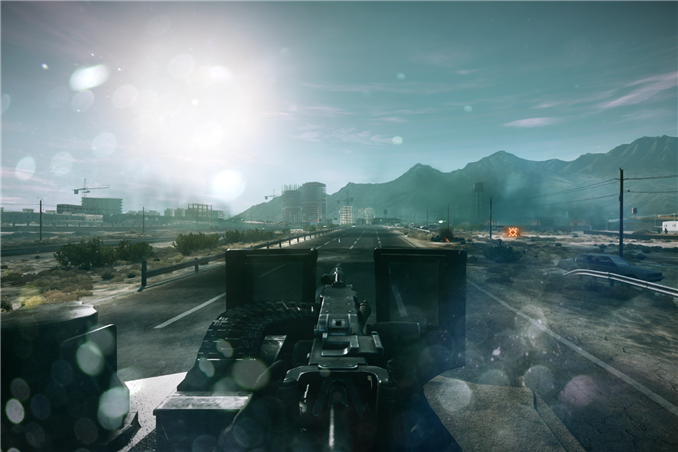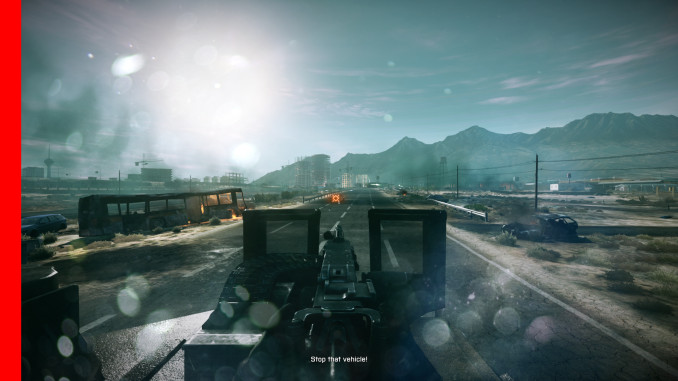FCAT: The Evolution of Frame Interval Benchmarking, Part 1
by Ryan Smith on March 27, 2013 9:00 AM EST
In the last year, stuttering, micro-stuttering, and frame interval benchmarking have become a very big deal in the world of GPUs, and for good reason. Through the hard work of the Tech Report’s Scott Wasson and others, significant stuttering issues were uncovered involving AMD’s video cards, breaking long-standing perceptions on stuttering, where the issues lie, and which GPU manufacturer (if anyone) does a better job of handling the problem. The end result of these investigations has seen AMD embarrassed and rightfully so, as it turned out they were stuttering far worse than they thought, and more importantly far worse than NVIDIA.
The story does not stop there however. As AMD has worked on fixing their stuttering issues, the methodologies pioneered by Scott have gone on to gain wide acceptance across the reviewing landscape. This has the benefit of putting more eyes on the problem and helping AMD find more of their stuttering issues, but as it turns out it has also created some problems. As we laid out in detail yesterday in a conversation with AMD, the current methodologies rely on coarse tools that don’t have a holistic view of the entire rendering pipeline. And as such while these tools can see the big problems that started this wave of interest, their ability to see small problems and to tell apart stuttering from other issues is very limited. Too limited.
In their conversation AMD laid out their argument for a change in benchmarking. A rationale for why benchmarking should move from using tools like FRAPS that can see the start of the rendering pipeline, and towards other tools and methods that can see the end of the rendering pipeline. And AMD was not alone in this; NVIDIA too has shown concern about tools like FRAPS, and has wanted to see testing methodologies evolve.
That brings us to this week. Often evolution is best left to occur naturally. But other times evolution needs a swift kick in the pants. This week NVIDIA has decided to give evolution that swift kick in the pants. This week NVIDIA is introducing FCAT.
FCAT, the Frame Capture Analysis Tool, is NVIDIA’s take on what the evolution of frame interval benchmarking should look like. By moving the measurements of frame intervals from the start of the rendering pipeline to the end of the pipeline, FCAT evolves the state of benchmarking by giving reviewers and consumers alike a new way to measure frame intervals. A year and a half ago the use of FRAPS brought a revolution to the 3D game benchmarking scene, and today NVIDIA seeks to bring about that revolution all over again.
FCAT is a powerful, insightful, and perhaps above all else labor intensive tool. For these reasons we are going to be splitting up our coverage on FCAT into two parts. Between trade shows and product launches we simply have not had enough time to put together a complete and proper dataset for FCAT, so rather than to do this poorly, we’re going to hold back our results until we’ve had a chance to run all of the FCAT tests and scenarios that we want to run
In part one of our series on FCAT, today we will be taking a high-level overview of FCAT. How it works, why it’s different from FRAPS, and why we are so excited about this tool. Meanwhile next week will see the release of part two of our series, in which we’ll dive into our FCAT results, utilizing FCAT to its full extent to look at where FCAT sees stuttering and under what conditions. So with that in mind, let’s dive into FCAT.
Reprise: When FRAPS Isn’t Enough
Since we covered the subject of FRAPS in great detail yesterday, we’re not going to completely rehash it. But for those of you who have not had the time to read yesterday’s article, here’s a quick rundown of how FRAPS measures frame intervals, and why at times this can be insufficient.
Direct3D (and OpenGL) uses a complex rendering pipeline that spans several different mechanisms and stages. When a frame is generated by an application, it must travel through the pipeline to Direct3D, the video drivers, a frame queue (the context queue), a GPU scheduler, the video drivers again, the GPU, and finally after that a frame can be displayed. The pipeline analogy is used here because that’s exactly what it is, with the added complexity of the context queue sitting in the middle of that pipeline.
FRAPS for its part exists at almost the very beginning of this pipeline. It interfaces with individual applications and intercepts the Present calls made to Direct3D that mark the end of each frame. By counting Present calls FRAPS can easily tell how many frames have gone into the pipeline, making it a simple and effective tool for measuring average framerates.
The problem with FRAPS as it were, is that while it can also be used to measure the intervals between frames, it can only do so at the start of the rendering pipeline, by counting the time between Present calls. This, while better than nothing, is far removed from the end of the pipeline where the actual buffer swaps take place, and ultimately is equally removed from the end-user experience. Furthermore because FRAPS is so far up the rendering pipeline, it’s insulated from what’s going on elsewhere; the context queue in particular can hold up to 3 frames, which means the rate of flow into the context queue can at times be very different from the rate of flow outside of the context queue.
As a result FRAPS is best descried as a coarse tool. It can see particularly egregious stuttering situations – like what AMD has been experiencing as of late – but it cannot see everything. It cannot see stuttering issues the context queue hides, and it’s particularly blind to what’s going on in multi-GPU scenarios.












88 Comments
View All Comments
wingless - Wednesday, March 27, 2013 - link
Is this NVIDIA developed tool unbiased towards AMD?Ryan Smith - Wednesday, March 27, 2013 - link
So that's a very good question, and one I didn't have time to adequately delve into for this article.The short answer is that on a technical level, there's no real possibility to fix the results. The extractor tool is only looking at a recorded video and has no idea what generated it. The overlay tool meanwhile is hooking into the pipeline at the application/Present level, similar to FRAPS. So it doesn't know anything about the hardware either.
On a practical level we've been over this with a fine-toothed comb. So have PCPerspective and others. What FCAT generates and what FCAT sees is consistent between all video cards. There's nothing strange going on.
That said, even NVIDIA is aware of the potential conflict of interest, which is why their goal is to eventually wash their hands of FCAT. The overlay can easily be implemented by someone else - ideally the FRAPS guys - and the extractor wouldn't be too hard to recreate (and the possibility is open of releasing the source for that). Someone had to do all the work to put this together though, and there really isn't anyone in a better position than a GPU vendor like AMD or NVIDIA. But now that they've laid down the template, independent parties can easily recreate all of this.
DanNeely - Wednesday, March 27, 2013 - link
IMO If their intent was to avoid maintaining the tool long term to avoid conflict of interest accusations they should've planned on making it open source from the start. Forcing 3rd parties to recreate something they always intended as a throwaway would be spiteful; and a pledge of opensourcing it would help mitigate accusations even if they held the code closed until it was completed.Ryan Smith - Wednesday, March 27, 2013 - link
Unfortunately the overlay cannot be open sourced. There are patent/licensing issues there with some of the code they're using. The only way for that to be compliant is to recreate it from scratch, hence the very specific interest in having the FRAPS guys do it.xdrol - Wednesday, March 27, 2013 - link
Seriously? That's lame.. What patented code does one need for drawing a single rectangle?Gigaplex - Wednesday, March 27, 2013 - link
Just what the heck are they doing in the overlay code that has patent/licensing issues? Recreating it from scratch won't avoid any patent issues, and it's simple enough to implement that you don't need to cross license copyrighted code from a 3rd party.zanon - Friday, March 29, 2013 - link
Ryan, Gigaplex is right and you're misunderstanding something here. Recreating code from scratch (*without* looking at the original, in other words clean-room reverse engineering) will get around any copyright issues. However, the whole reason software patents are so pernicious and wrong is that they protect the mere idea, not any implementation. Someone who came up with this completely independently and did it all themselves would still be violating any software patents on the idea of it.If it actually is patented then the only way around it is for someone in a non-software patent country to do it or for anonymous people to just blow the law off and do it anyway. Also, software patents don't preclude open source either, they're semi-orthogonal depending on the license, but OSS is primarily about copyright (though the GPL 3 tries to expand it a bit). Nvidia may have separate licensing issues though that'd be unique to them.
ARealAnand - Tuesday, April 9, 2013 - link
please see comment below for my attempt at a reply to this comment. Sorry for the comment spam.wingless - Wednesday, March 27, 2013 - link
Thank you for the informative reply. I look forward to your use of FCAT (it needs a new name: FrapCAT).Taracta - Wednesday, March 27, 2013 - link
I think there is a need to go over what frame drops and partial frames (runts) are as explained in article [LINK]http://www.anandtech.com/show/2794[/LINK]